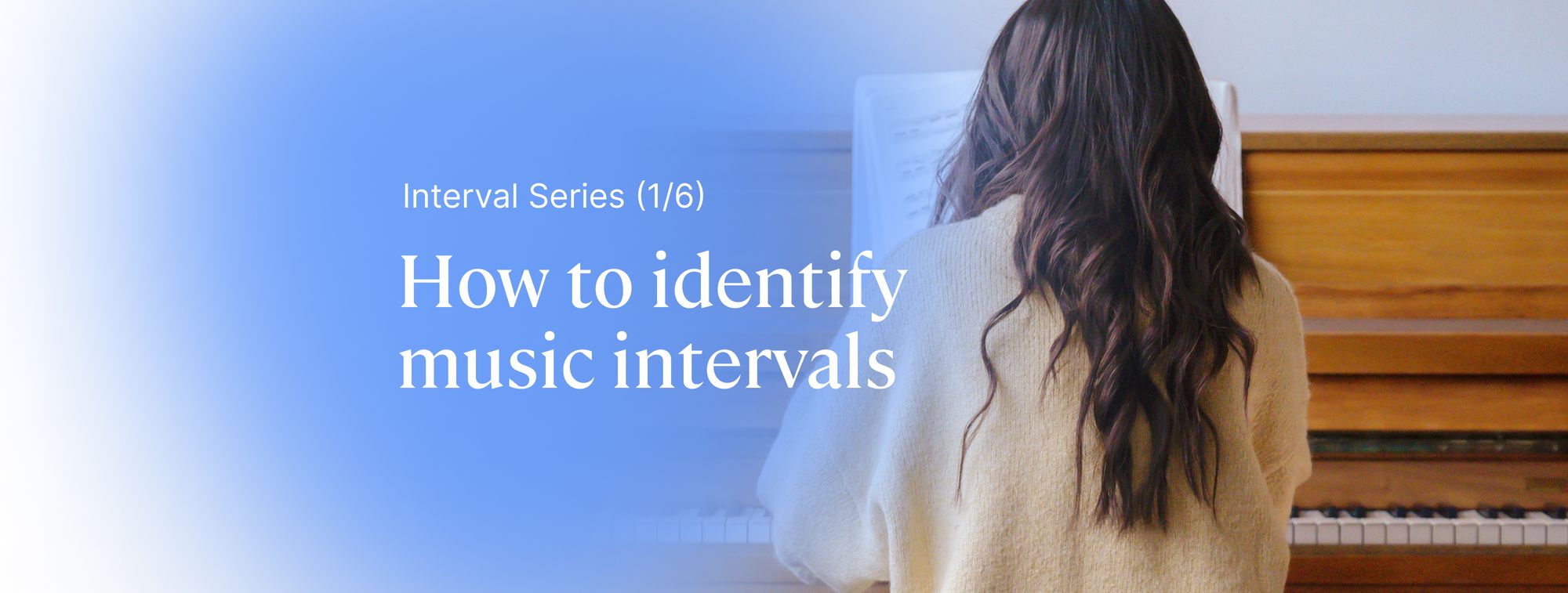In our last article, we discussed the basics of intervals – what they are, how many types exist, and how they're named. In short, intervals in music represent the distance between 2 notes.
Now let's move on to something even cooler. Imagine being able to hear a few notes and just know the interval. Once you're there, it's like having a superpower for understanding music! So get ready to dive into the fun stuff – learning how to pick out intervals by ear!
Every interval carries its own unique "color," "sound," or "shape." The goal of this series is to link each interval with a song (or more specifically, with the first two notes of a song). This way, you can easily recall the distinct "color," "sound," or "shape" of each interval.
Since this topic can be a bit long, we've broken things down into a series of 6 articles. We're hoping that will help organize the information and make it easier for you to grasp.
Here in Part 1, we'll delve into the following intervals:
- Ascending minor 2nd
- Ascending major 2nd
- Ascending minor 3rd
Part 2 will cover:
- Ascending major 3rd
- Ascending perfect 4th
- Ascending augmented 4th
- Ascending perfect 5th
In Part 3, we'll explore:
- Ascending minor 6th
- Ascending major 6th
- Ascending minor 7th
- Ascending major 7th
Part 4 will discuss the descending intervals:
- Descending minor 2nd
- Descending major 2nd
- Descending minor 3rd
In Part 5, we'll look at:
- Descending major 3rd
- Descending perfect 4th
- Descending augmented 4th
- Descending perfect 5th
Finally, in Part 6, we'll wrap things up by addressing:
- Descending minor 6th
- Descending major 6th
- Descending minor 7th
- Descending major 7th
Don't forget to log into your Flat account to access the digital keyboard if you don't have one on hand for practice. Let's begin!
How to identify ascending minor seconds
A minor second, aside from perfect unisons, stands as the tiniest melodic interval, spanning just one half-step. Every minor second carries a consistent similar sound.
💡To refresh your mind regarding the different interval types, check out this article.
Some examples of ascending minor seconds are:
- B-C
- E-F
- G♯-A
Remember that even A♭-A♮ covers just a half-step. However, we refer to it as an augmented unison, a concept detailed in this article. The interesting part is that minor seconds and augmented unisons have the same interval width (a half-step), giving them the same distinct sound, despite their different names in theory.
Let's listen to the mentioned examples:
I have a song that will make you remember this interval for ever. The first two notes of the Jaws Theme (composed by John Williams) is an ascending minor second!
How to identify ascending major seconds
Like we said in a previous article, a major second is created by two semitones (a whole tone). Regarding ascending minor seconds, and indeed all other interval types, each type carries a distinct characteristic in its sound profile.
Let's listen to some examples of ascending major seconds:
- B - C#
- E - F#
- G - A
- Bb - C
To help remember this interval, think about the first scale we learn in music: the C major scale. The first two notes of this scale make an ascending major second.
How to identify ascending minor thirds
This is the last interval we'll talk about today, so as not to overwhelm your ear. I recommend spending a week practicing, listening, and singing these intervals before heading to the next article.
As mentioned in our previous article, a minor third is created by 3 semi-tones.
Let's listen to some examples of ascending minor thirds:
- B - D
- E - G
- G - Bb
- Bb - Db
- F# - A
Notice that C-D♯ is also a distance of 3 semitones. But we call this interval an "augmented second." Because both minor thirds and augmented seconds have the same interval width (3 semitones), they share the same distinct sound, despite their different names in theory.
Listen carefully to the first two notes of "Smoke on the Water" by Deep Purple – those first two notes create an ascending major third:
🔥 I have a great tool for you to practice! Check it out here.
Honestly, there's no magic trick to learning how to recognize intervals. It's all about listening to lots of examples over and over until you get used to the sound of each interval type. So my advice is to sit at your keyboard or use the virtual one in Flat. Play different intervals and sing along, always taking note of which interval you're playing. Over time, this will help you remember the sound of each one.
See you next time!
Articles in our interval series:
